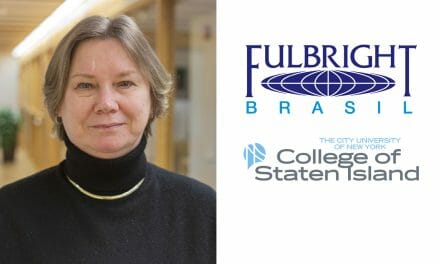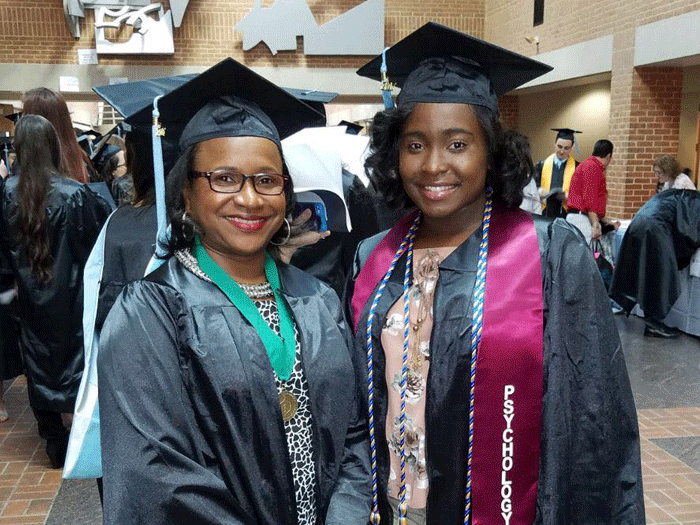The National Science Foundation (NSF) annually funds summer research opportunities for undergraduate students through its Research Experiences for Undergraduates (REU) program. This is the third consecutive year that the College of Staten Island has been an NSF-sponsored REU site for students seeking to build their hands-on research skills in the study of polymers and biopolymers.
The NSF-sponsored REU program is a winning opportunity for highly motivated students who are not afraid of hard work and want to break new ground for advances in science and technology. This year, a dozen students from across the country get to work closely with CSI faculty, experiencing first-hand how basic research is carried out, as well as its importance.
At CSI, these students fulfill critical roles in the faculty members’ research teams, build impressive content for their resumes, establish prestigious contacts, and can become coauthors on published research reports in international journals.
For instance, Allen Fung, a freshman from Long Island University (LIU) in Brooklyn, is working with chemistry professor Ruth Stark. Stark is co-director of the college’s REU program this year, and with help from Fung, she is examining a species of potato from Israel which suffers from “hard-to-cook syndrome.”
“When these potatoes are cooked,” Fung said, “they’re very hard, and instead of mashing them, you have to smash them, with a hammer.” Fung and Stark will be using CSI’s Nuclear Magnetic Resonance (NMR) spectrometers to track down the biochemical molecules that create this particular tuber’s troubles.
Professor Stark, a veteran researcher at CSI, recently received funding from New York State’s Gen*NY*sis (Generating Employment for New York Science) program to create and direct the college’s CUNY Institute of Macromolecular Assemblies, which will undertake research and education related to the underlying causes of plant and animal diseases.
Dr. Ruth Stark“I think the purpose of the [REU] program is to give the students a concrete picture, as well as an intangible flavor, of what it is like to do science, not just learn science,” commented Stark, noting that for budding scientists, it is “important to get into the lab and see if this activity excites you.”
It is this hands-on experience with mentors in the laboratories at CSI that will give students “a real sense of whether or not they want to do this as a career, and to discover new things in the way that scientists do,” continued Stark.
The REU program also reinforces the importance of collaboration with fellow scientists according to Stark, because it “allows students to not only present their results, but to ask questions of others’ results. Since there is no college in the country where chemistry majors are a big majority, getting together like this is really quite marvelous.”
Another student, Raj Vasnani, originally from Chicago, will be a junior this fall at Duke University in North Carolina. He is summering at CSI because he wanted to do “something more productive than earn traditional summer school credits.”
Vasnani decided to pass on Columbia University’s REU program, New York City’s only other REU site offering chemistry research, saying that he finds CSI’s program more suited to his interests. Calling Columbia’s program “the chemistry of engineering,” Vasnani is excited about studying at CSI because he will be investigating “the chemistry of life.”
Working in the lab with chemistry professor Shuiqin Zhou, Vasnani is eager to elucidate the macromolecular structure of polysaccharides (complex carbohydrates made up of sugar molecules) by analyzing how these structures scatter monochromatic light. While out of the lab, Vasnani is eager to discover the culture of New York City.
Heading farther south, Clare V. LeFave, a chemistry major with an emphasis in biochemistry at Eckerd College in Florida, comes to CSI as a veteran of the REU program, knowing that undergraduate research is often a criterion that graduate schools use to determine who will be accepted into their programs.
Last year, LeFave participated in an REU program at the University of Notre Dame in Indiana. This year, she broadens her REU experience at CSI by working with chemistry professor Chwen-Yang Shew to develop computer modeling programs that may explain the structure of membrane proteins in biological cells. Moreover, the results of this modeling may also be applied to the movement of viruses and their interactions with cells.
The opportunity to build their resumes and participate in important research is not just for the out-of-towners. Local students know how to seize the opportunity as well.
Franklin Bright, a native of Massachusetts, will be a senior at Wagner College on Grymes Hill this fall semester. Bright, a biology major and one of three captains of the college’s awarding winning football team the Seahawks, attends Wagner on an athletics scholarship.
This “jolting” defensive tackle brings more to the gridiron than a knack for gaining possession of the fabled pigskin for his team; he has his sights set on graduate school and attaining his Ph.D.
Bright, working at CSI with biology professor Valerie Pierce studying cell membrane permeability, is confident that the research experience available to him “down the road” at CSI will give him the edge he needs to succeed.
Professor Pierce was recently awarded a Merck/AAAS (American Association for the Advancement of Science) Undergraduate Science Research Program (USRP) grant and as Principal Investigator, she is engaging undergraduates in research to synthesize unique nanomaterials.
Undergraduates from CSI are also taking advantage of this year’s REU program.
For example, Hanako Hirose grew up in a household of medical doctors in Tokyo, Japan. She received her B.A. in sociology from Beloit College in Wisconsin and spent three years working on Wall Street as a financial recruiter.
Hirose then decided that it was time to change professions, and that meant returning for another undergraduate degree. She contemplated attending Brooklyn College and Hunter, but “didn’t like their campuses.”
Her boyfriend, Robert P. Pitera, a 1985 CSI graduate who is now a medical doctor specializing in mesotherapy and recently opened a private practice on Park Avenue in NYC, gave Hirose some encouraging words about how CSI prepared him for medical school. Hirose, a resident of the Huguenot section of Staten Island during the academic year, decided to attend CSI with a music major and chemistry minor.
Like Bright, she knows that working with CSI’s nationally recognized faculty will give her an edge to succeed when it comes time to enter the workforce or attend graduate school.
After a full day of research work, students and mentors also have many opportunities to discuss their work, their lives, and the world. Seminars, lunch meetings, and social functions have been scheduled throughout the ten week REU program to bolster the interaction among undergraduates, faculty, and research professionals.
Student stipends and lodging are sponsored directly by the NSF. This year, students are living in the dormitories at Wagner College.
Professor Stark noted the possibility of “a unique collaboration with CSI’s Discovery Institute – they [high school students] may attend our interim oral presentations in early July, and we [REU students] may help judge their [research] posters in late July.” Stark stressed that these arrangements are still tentative.
CSI’s REU program culminates with a poster symposium of research results on August 7 in CSI’s Library rotunda.
















